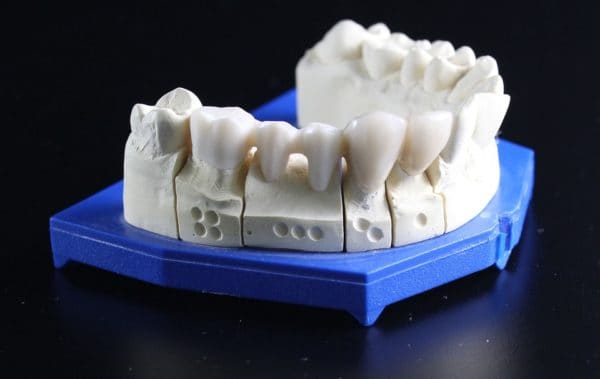
You probably don’t think of dental innovations as being very exciting, but they can change the way you think about disease and health. And, they may even save your life one day. Here are the latest innovations that are promising to make a serious impact on the industry and for consumers.
Dental Impression Systems
One of the most exciting innovations in recent years is the advancements in the industry when it comes to dental impression systems. And, many of these new services are being covered by dental plans, which you can learn more about here: mydental.guardianlife.com.
The digital impression systems provide better accuracy and efficient workflow. They beat out their goop predecessor. Dental Wings, which is an established name in lab scanning, has the DWIO system ready for launch. And, comparing it to other systems on the market, it’s clear that even the second-best alternative is no match.
It’s camera is far superior, the high-resolution touch screen makes navigation of the scan easy, and the head of the camera is a T-bar shape featuring 10 integrated cameras set up in pairs for redundant scanning. There is also a touch-free way to control the machine and review and manipulate data.
Align Technology and 3Shape are both vying for dominance in the marketplace though. With Align’s new iTero Element, you get a smaller scanning wand and faster scan time. 3Shape’s TRIOS 3 also has a smaller wand, with a pen style or pistol style grips and an integrated intraoral camera.
Cameras That Are Less Expensive Than Your iPhone
Intraoral cameras used to be pretty expensive. But, today’s camera is much cheaper. Over the years, dentists have seen improvements like capture boxes which have been replaced by USB connections and then those connections lead to advancements in data transfer and camera tech.
But, the pricing of cameras has, until now, remained in the hundred-thousand dollar ranges. MouthWatch has changed all that with their new camera design and pricing. At 1/10th the price, their cameras offer the same USB connection, LED lighting, and diagnostic image of the options currently being used in the dental office. With lower costs, dentists can afford higher quality and maybe even a lower cost to the consumer.
3D Printing
3D printing used to be science fiction. Now, it’s just science. ImageOnce uses a digital impression to allow for in-office milling. This is obviously much faster than the current process and results in faster returns from the lab. At the very least, dentists will be getting more accurate restorations.
Dental Implants
Dental implants have been around forever. From crowns to dental braces and related hardware to bridges. Implants aren’t going away. Quite simply, they work, and they work very well.
But, they have never been this good. Nobel Biocare continues to follow the internal conical connection that has shown consistent results and has been a favorite of dentists. But, it also debuted a straight non-tapered implant with the same connection. They also have a new feature that uses angled drivers to place the access hole at the desired angle.
Indeed, the innovations in dental implants significantly improve people’s lives. Many cosmetic dentists seek services from a reputable dental marketing agency to promote their specialty in dental implants. So, it’s not surprising that cosmetic dentists have many customers.
Laser Tech That Keeps Improving
Laser technology use has waxed and waned in the industry. Today’s lasers, however, are light years ahead of anything we’ve seen in recent years. BIOLASE’s WaterLase iPlus 2.0 is an all tissue erbium laser. It’s designed to cut both hard and soft tissue.
AMD Lasers also introduced their new diode laser, called the Picasso Perio Dental laser. It’s a tiny laser sitting on top of a cart, designed to be an all-in-one solution for perio treatment.
Anesthetic Buffering
One of the things many dental students, and assistants, and even dentists struggle with is buffering solutions when injections are necessary for a procedure.
A new buffering agent, sodium bicarbonate, is a chemical that’s hard to keep stable. But, a new innovation allows it to be used for up to 4 days. If dentists are using the recommended dosage for lidocaine, they can get up to 25 injections at 2ml each.
Even if dentists didn’t want to take advantage of this, there is the disposable syringe that is sure to make things a lot easier and more convenient. And, as digital technology advances, the clutter and space-hogging nature of case pans and stone models will be replaced by computer screens connected using high-speed CAT6 cables. Cost creep should be halted, which means a more profitable practice. And, with compensation falling in the dental industry, this is a very good thing.
All around, dental innovations are making the industry better. And, this is good for both dentists and patients.
Exploring New Dental Technology: Key Considerations Before Treatment
When contemplating a new dental technology treatment, it’s vital to assess various factors for a comprehensive decision-making process. Engage in a discussion with your dentist to clarify expected outcomes.
Ensure the qualifications and expertise of the performing dental professional meet the demands of the specific technology. Discuss your complete medical history to determine eligibility, addressing potential health concerns or complications.
Inquire about potential risks associated with the new technology, weighing these against your comfort level with risk. Explore alternative dental treatments, comparing benefits and drawbacks to determine the most suitable approach.
 Gearfuse Technology, Science, Culture & More
Gearfuse Technology, Science, Culture & More


